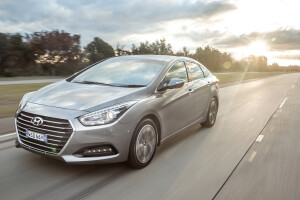Latest Review
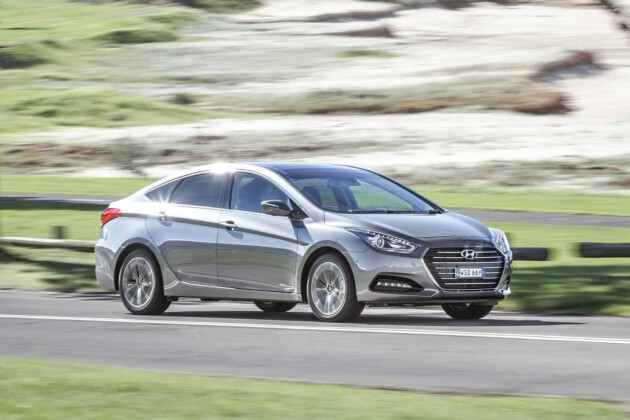
Hyundai i40 Series II Quick Review
The turbo-diesel powered Hyundai i40 Premium sedan provides hybrid-beating fuel economy and heaps of technology for well under $50,000
TELL ME ABOUT THIS CAR
Hyundai has made great inroads to the Australian car market, with many of its models being hits in their respective classes. One model that hasn’t quite become a household name is the mid-sized i40, which has plenty of tough competition, with the Toyota Camry, Kia Optima and even the Hyundai Sonata sitting next to it in showrooms.
The i40 was also one of the more bland-looking Hyundai’s when compared to stablemates such as the Elantra. But that’s changed with the Series II, which comes with a tasteful facelift that gives it graceful sweeping lines, pretty teardrop headlights and a big-bold grille.
It has more technical features than the petrol-powered Sonata and comes with a very economical 1.7-litre turbo-diesel engine.
The features-packed, top-spec Premium model is a lot of car for a sub $50,000 drive away price. It will be interesting to see how this and future models sell once the last Aussie-built family cars stop rolling off the production lines.
STRENGTHS
- The interior: This is a very pleasant place to be, with the large panoramic sunroof adding to the ambience. The dashboard is nice to look at, with a futuristic design including angular air vents that lead to the seven-inch touchscreen that shows entertainment, phone, reverse camera and sat-nav functions.
- Comfort: The leather-appointed seats are firm and take a bit of getting used to but once you do you’ll enjoy the back support. The driver’s seat has 10 electronic adjustments and both front seats have heating. The back seat has plenty of leg and head room for a medium car. Back-seat passengers have their own air vents and a fold-down armrest in the middle with drink holders and storage space under a flip-up lid.
- Storage: The centre console has a nice big bucket under the arm rest along with a couple of cup holders. There’s a nice deep aperture in front of the gear stick where you can put and plug in your phone to USB and auxiliary sockets. You can also put your keys in there, which is good for a car with push button start. The boot is huge – its 505-litre capacity is bigger than the Holden Commodore.
- Tech: i40 comes with plenty of tech including Auto Hold (which engages the electronic park brake when stopped on an incline), Park Assist sensors, Emergency Stop Signal, Lane Keeping Assist System, and Smart Park Assist, which automatically steers the car into a parallel parking spot.
- Economy: The 1.7-litre four cylinder diesel turbo engine is incredibly economical, with a published combined economy rate of 5.1L/100km – less than Toyota’s Hybrid Camry. By direct comparison, the 2.0-litre petrol i40 Tourer wagon has a combined rating of 7.5l/100km
WEAKNESSES
- Performance: There is a noticeable lag if you stomp on the pedal, particularly from a standing start – be very careful at busy roundabouts. It’s a lot happier once you get moving and the seven-speed automatic transmission gets you up to speed smoothly.
- Engine choice: While the i40 Tourer wagon comes with petrol and diesel options the sedan only has comes with the diesel. With low fuel prices seeing a decline in diesel car sales Hyundai have missed a good opportunity to make a bigger dent in the medium car market.
ANY RIVALS I SHOULD CONSIDER?
- The Kia Optima is the most obvious answer even if they are no longer a direct comparison – there is no diesel Optima yet and the i40 sedans only come with the diesel engine. The Kia has long had the wood over the i40 in terms of looks and popularity but the i40 can now stand toe to toe but doesn’t quite land a knock-out blow even with the smaller price tag.
- Incredibly, one of the i40’s biggest competitors is the Hyundai Sonata, but the i40 now has the edge with updated styling, more tech and the economical diesel engine for about the same price. The petrol-only Sonata is a little bigger.
News
-
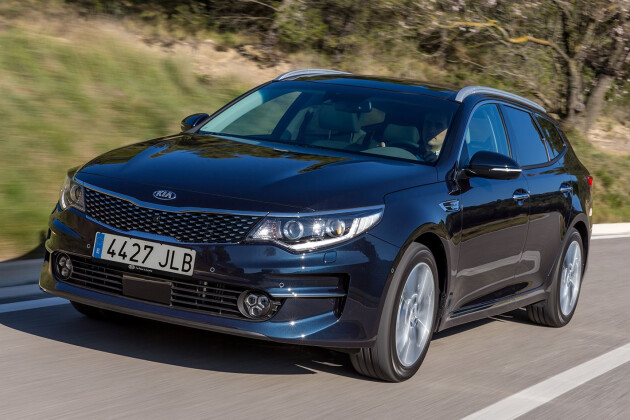 Events
Events2016 Geneva Motor Show: Kia Sportswagon revealed
Optima-based wagon makes the leap from sporty, muscular concept to cardigan-wearing family fare
-
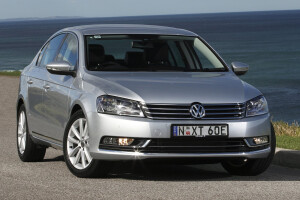 Advice
AdviceBest Value Medium Cars 2015
Kia finishes on top with spectacular fuel economy; Volkswagen leads a diverse premium field.
-
 Best Value Cars
Best Value CarsMedium Cars under $45K: Gold Star Value Awards 2015
Asia dominates big group
-
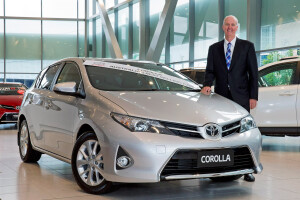 News
News2014 car sales: Australia’s Hottest 100
The complete list of the Top 100 vehicles rockin' Oz
-

Medium Car Under $45K: Gold Star Value Awards
-
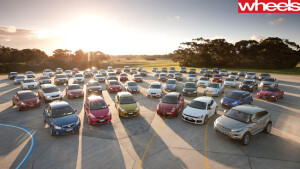
Only one Aussie in COTY 2011
-
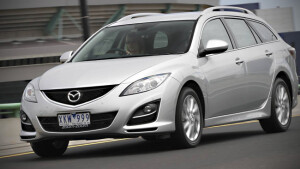
Mid-sized wagon warfare


